News+Media
Browse all content by date.
News, Articles, Blogs, Photos, Videos
Tuesday, Nov. 17th, 2020
Hunter success picks up over fourth weekend of general hunt in southwest Montana

Hunter success picked up over the fourth weekend of the general deer and elk hunting season in southwest Montana, with fresh snow that made tracking wildlife easier in some places.
Wildlife biologists with Montana Fish, Wildlife & Parks operated several check stations during all or part of the fourth weekend of the season — Nov. 14 and 15. In total, biologists met with 776 hunters (an increase of about 200 hunters from the previous weekend) at check stations in Cameron, Gallatin, Divide and the lower Blacktail Deer Creek watershed.
Biologists use check stations to collect data on hunters’ participation, success and wildlife observations, as well as the species, sex and age class of the animals harvested. This supplements data collected through hunter harvest phone surveys.
This was the busiest weekend at the Cameron station this season, with 313 hunters, but hunter numbers here remained below the long-term average. Hunter success at the Cameron check station was 11.8 percent. The Gallatin check station saw 103 hunters, and hunter success there more than doubled from the previous week to 14.6 percent. The Divide check station saw 224 hunters, with a hunter success rate of 8.5 percent. Nine percent of the 136 hunters that came through the check station on lower Blacktail Deer Creek were successful.
Over the weekend, biologists checked 50 elk, 18 mule deer and 7 white-tailed deer, among other species.
These figures do not account for different hunting season regulations over the years, which have varied from liberal to restrictive for elk and mule deer, depending on population status.
Bozeman CWD sampling station closed due to COVID-19
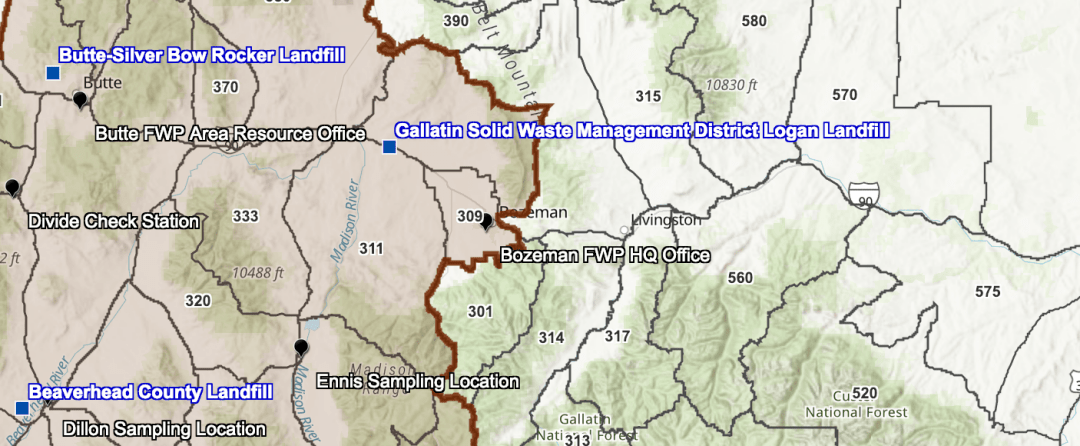
The chronic wasting disease sampling station in Bozeman has been closed due to COVID-19.
This station was located at FWP’s Bozeman office, 1400 S. 19th Ave.
Hunters who need help collecting CWD samples from their harvested deer, elk or moose can find alternative sampling station locations at https://buff.ly/35vFbWh. Hunters can also access resources from FWP on how to collect and submit samples themselves by visiting https://go.usa.gov/x7EGX.
Thursday, Nov. 12th, 2020
Rural EMS Agencies to Receive Mobile Simulation Training
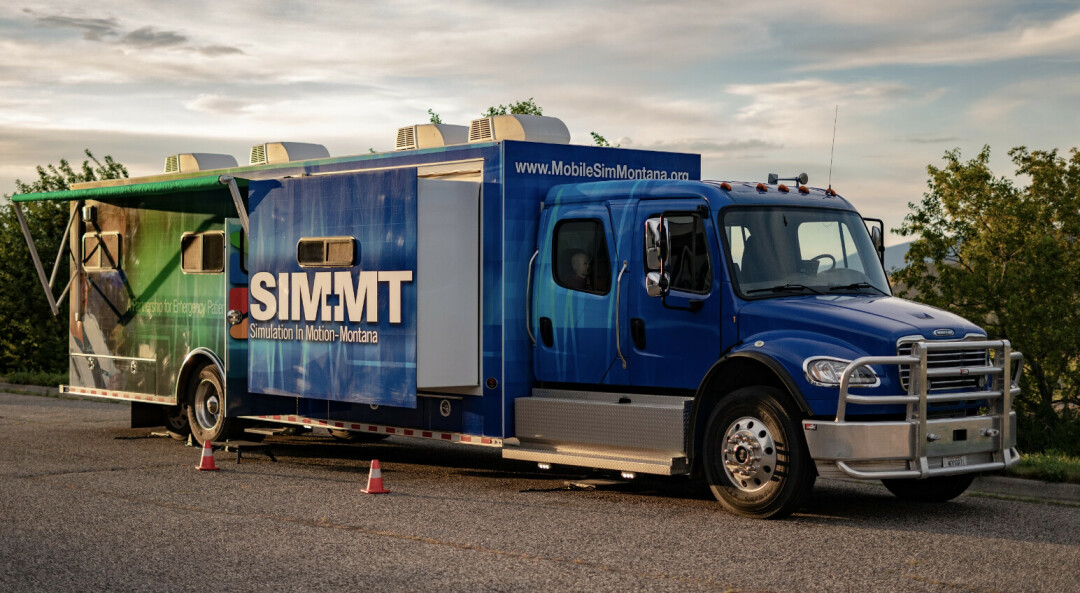
Simulation in Motion Montana (SIM-MT) has received a $20,000 award from the Sibanye-Stillwater Community Giving program. This award will allow for simulation training services for up to eight EMS/fire agencies in the catchment area of south central Montana Sibanye-Stillwater operations.
The rural agencies who will benefit from SIM-MT’s world-class simulation training are the primary 911 response for more than 7,000 square miles of south central Montana, including response for mine employees. As a result of this grant, the eligible first responders will receive sophisticated, high-fidelity simulation training to prepare them to more effectively respond to injuries. “Sibanye-Stillwater is so grateful for its local emergency responders, many of whom are graciously donating their time and skills as volunteers, and believes this training will enable these emergency responders to give back even more to our local communities,” says Marlena Ferguson of Sibanye-Stillwater.
Beneficiaries of this training are not just first responders. In fact, the primary benefit will be for patients needing critical care in these rural communities. High fidelity simulation training improves first responders’ abilities to provide effective immediate treatment at the site of an accident and/or in transit to a hospital, which is crucial to improving positive outcomes for all patients. SIM-MT brings that level of training to EMS agencies’ front doors. 
The Helmsley Charitable Trust will match this gift dollar for dollar, which will support SIM-MT in reaching additional facilities and responders across the state. “SIM-MT, along with its project partner, Best Practice Medicine, is excited for the opportunity to provide training to first responder agencies in south central Montana and grateful for the support of Sibanye Stillwater in our efforts to do so,” said Sara Kaull, Interim Executive Director of SIM-MT. “This grant from Sibanye-Stillwater, and the match provided by the Helmsley Charitable Trust, are critical to our ability to bring this caliber of high fidelity simulation training directly to underserved first responder agencies in Montana.”
For more information on SIM-MT’s mobile simulation services, visit our website: www.simmt.org.
Southwest Montana hunters see varied success over third weekend of general hunt
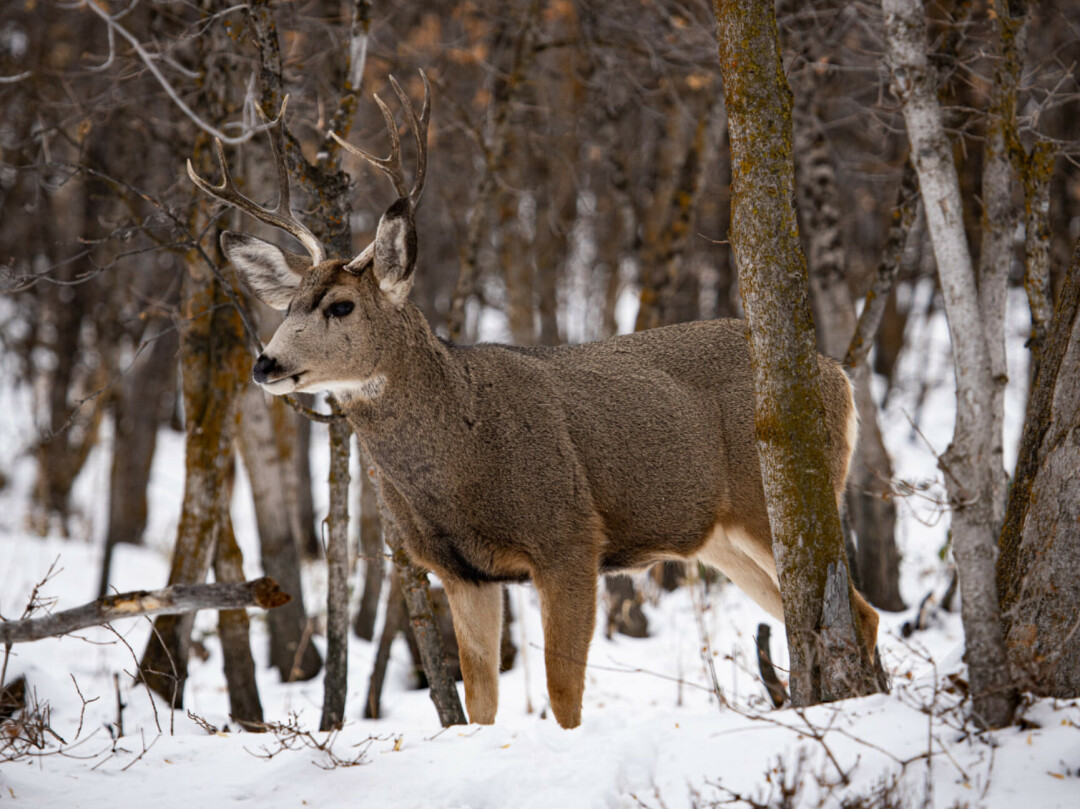
BOZEMAN – Hunter numbers and success continue to vary in southwest Montana as recent snowfall facilitated some harvest opportunity while creating challenges for travel and access.
Wildlife biologists with Montana Fish, Wildlife & Parks operated several check stations during all or part of the third weekend of the season — Nov. 7 and 8. In total, biologists met with close to 600 hunters at check stations in Alder, Cameron, Gallatin and Divide.
Biologists use check stations to collect data on hunter participation and success, as well as the species, sex and age class of the animals harvested. This supplements data collected through hunter harvest phone surveys.
The Alder check station saw 233 hunters, 14 percent of whom harvested an animal. This was the highest success rate for hunters at this check station so far this year. The Cameron check station saw 206 hunters, with a success rate of 6.4 percent, slightly lower than the long-term average of 7.8 percent. The Gallatin check station, which operated only on Nov. 7, saw 57 hunters, 7 percent of whom were successful.
In a preliminary total, biologists checked about 28 elk, 18 mule deer and 7 white-tailed deer, among other species.
These figures do not account for different hunting season regulations over the years, which have varied from liberal to restrictive for elk and mule deer, depending on population status.
Wednesday, Nov. 11th, 2020
How to convert Mp4 to Mp3 Easily Using Evano Software Online
Convert Mp4 to Mp3 on Evano easily! Extract audio files in high 320kbps quality from online Mp4 videos, concerts, music clips. Best free Mp4 to Mp3 converter! Convert to Mp3 audio file ready for car sound system, phone, tablet, or music player. Convert dozens of Mp4 files to Mp3 at once. Evano the only freeware which can convert Mp4 to Mp3 files swift & keeps its original audio quality! 100mb limits and super simple!
One of the primary uses of this tool is to try and convert a music video to an Mp3 file. Which generally means a shorter, 3-5 minute video that will have a relatively small file size. If you do not want the video anymore and want to split the audio and video from each other and just keep the video, this tool will allow you to do this very quickly. You will need to have the video file on your device to do this. Taking the video from YouTube or any other website is not possible using Evano. You must download the video first. Since these videos are already the correct format, it will be easy to convert mp4 to mp3 without any troubles.
While modern smartphones and desktops can handle all kinds of high-quality audio formats, Mp3 is still one of the most popular audio formats used by average users. If you are one of those users who prefer to listen to their music than watch it, you can use an Mp4 to Mp3 converter app to convert your favorite video tracks into Mp3 format. Using an Mp4 to Mp3 converter, you can save a video file into an audio file. There are several Mp4 to Mp3 converters online and offline that can help you to change the media file into an audio.
Mp4 is a short form of MPEG-4 which stores audio, video, image, and other data like text. Mp4 came into existence in 2001 based on MOV, and the current version of Mp4 was released in 2003.
Mp3 is a short form for MPEG-1 Audio Layer 3. Mp3 is always smaller than the Mp4 file. According, if you are saving music audio for use on portable players, or your audio player, a smartphone is getting full, you should convert Mp4 to Mp3.
There are a variety of free file converters you can use directly in your browser or download to your desktop. Read on to learn about Evano and follow instructions on how to convert your Mp4 using the Evano converter.
Step 1: Navigate to Evano
The Evano homepage is the best place to start. Evano is an intuitive, online-based service that provides a stand-alone option that requires little more than an internet connection and your file. It’s entirely free, requires no additional software to run, and supports quick conversion between more than 20 formats — most importantly in our case, Mp4 to Mp3.
While the resulting audio quality is great, as is the conversion speed, a free account can only handle files less than 100MB in size.
Step 2: Click the Select File button in the middle of the page and select the video files you wish to convert to Mp3. A pop-up window will appear where you can locate or search for the desired files on your computer. You can also choose a file from a URL or your Dropbox, Google Drive, or OneDrive to download video with Evano. Once your data are selected, click the Open button in the lower-right corner to add the file to the conversion queue.
Step 3: Click the drop-down arrow button that appears after uploading your Mp4 file, then select audio followed by Mp3 from the drop-down list. Click the wrench icon located directly beside the data if you wish to fine-tune the audio bit rate (up to 320kbps), channels, frequency, normalization, or trim the new file to a specified length. The latter is an incredibly handy tool if your video has an introduction or ending with undesired audio. When finished, click the okay button. It may take some time, but Evano Converter will notify you when your conversion completes. Then click the green Download button and select a save destination for the file. Now that you ripped your audio, you need a decent Mp3 player to play it on.
Tuesday, Nov. 10th, 2020
MSU to lead study examining COVID-19's effect on U.S. nursing workforce
Montana State University has been selected to lead a two-year study about the effects of the COVID-19 pandemic on nurses, the largest group of U.S. health care workers, focusing on changes in employment, earnings and the supply of nurses. The study is being funded by grants totaling $430,000 from the Robert Wood Johnson Foundation, The John A. Hartford Foundation, the Johnson & Johnson Foundation in partnership with the Johnson & Johnson Center for Health Worker Innovation and UnitedHealth Group.
The study is being led by Peter Buerhaus, professor in the MSU College of Nursing and director of the MSU Center for Interdisciplinary Health Workforce Studies, along with co-researchers Douglas Staiger, professor of economics at Dartmouth College, and David Auerbach, senior director of research and cost trends at the Massachusetts Health Policy Commission.
“Over the last century, nurses have faced many shocks, including world wars and economic recessions, but they have not experienced a pandemic in modern times,” Buerhaus said. “For the country’s well-being, it is critical to track and understand the effects of COVID-19 on the nursing workforce.”
There are approximately four million registered nurses and 200,000 nurse practitioners across the nation, and they are supported by more than 600,000 licensed practical nurses and hundreds of thousands of nursing assistants working in countless care delivery settings.
The study will research whether employment in certain settings grew during the pandemic, assess regional differences and seek to better understand if the pandemic has had a disproportionate impact on earnings and employment by race, ethnicity, gender and age.
“Through this research we want to understand whether nurses are leaving the workforce and whether large numbers of baby boomer nurses are retiring earlier than they had planned,” Buerhaus said. “If the pandemic is causing nurses to leave the workforce or retire early, then health care delivery organizations could be in trouble.”
“It is imperative that our workforce research include an analysis of the pandemic’s impact on nursing assistants, licensed vocational nurses and professional registered nurses, especially those working in nursing homes,” said Terry Fulmer, president of The John A. Hartford Foundation who recently served on the independent Coronavirus Commission on Safety and Quality in Nursing Homes. “The illness and deaths in these settings have taken a terrible toll on residents and families, and on these essential staff who are the backbone of care for our most frail older adults and people with disabilities.”
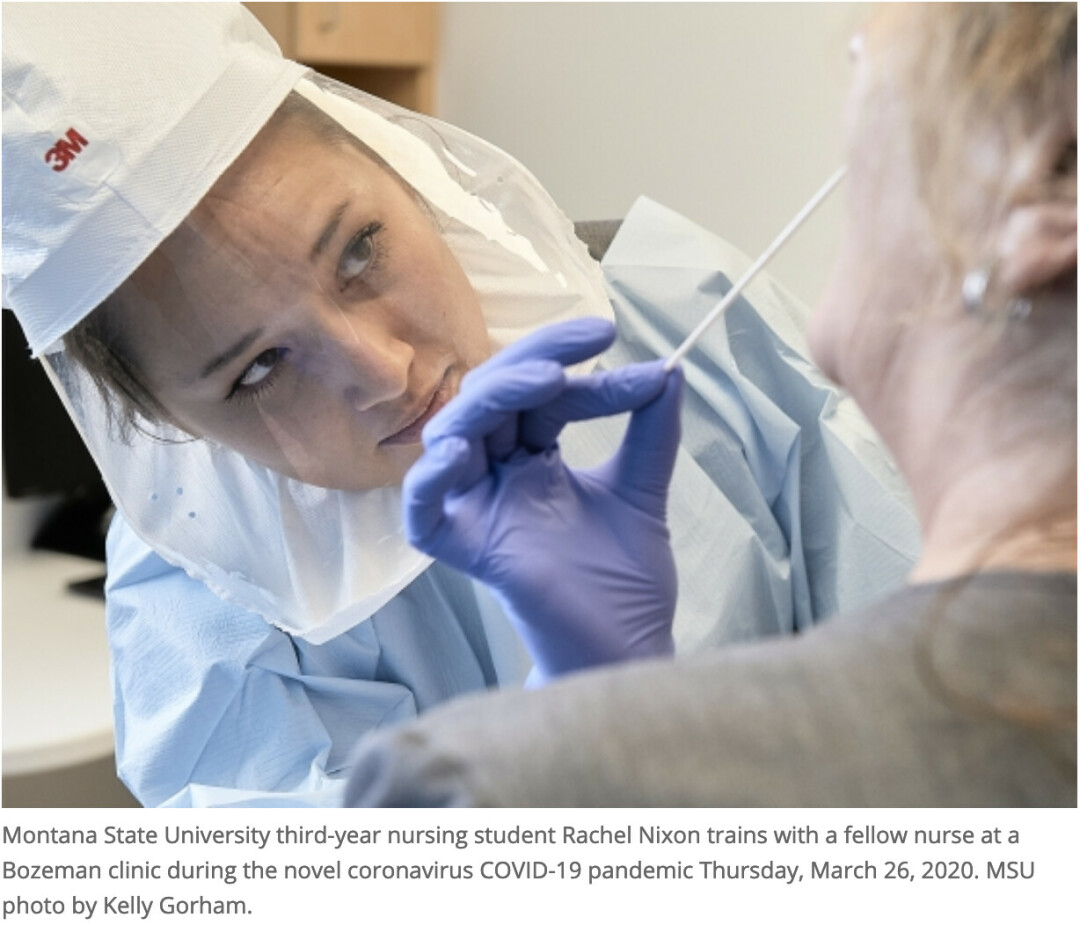
Finally, the researchers will forecast the number of registered nurses through 2030. Prior to the pandemic, forecasts indicated that the number of registered nurses would increase by at least one million. Now, experts say, that number is unclear.
Over the past 20 years, Buerhaus, Staiger and Auerbach have conducted numerous of studies of the nursing workforce. Regardless of the pandemic’s effects on the nursing workforce, Buerhaus said, one thing is clear: nurses will continue to be as crucial as they always have been.
The report will be completed by 2022, but throughout the project, key results will be shared in quarterly reports and peer-reviewed journals, as well as through webinars and interactions with government workforce organizations, professional associations, researchers and others.
“Nurses serve as critical links between patients and other members of the care team, especially during a health crisis,” said Mary Jo Jerde, a nurse and senior vice president, UnitedHealth Group Center for Clinician Advancement. “Understanding the impact of the pandemic on the workforce will help policymakers, health care delivery organizations, academic institutions, payors and the public work together to better support nurses now and into the future.”
“Nurses are the most admired, trusted and respected of all professions in the United States,” said Susan Hassmiller of the Robert Wood Johnson Foundation. “They keep people safe, they assure quality, and they advise people and comfort them. We need to know the impact this pandemic is having on nurses of all races, genders, regions and settings. We cannot let this pandemic deflate the culture of this vibrant profession.”
Monday, Nov. 9th, 2020
Gallatin Valley Mall Prepares For a Safe and Joyful Holiday Shopping Season
Gallatin Valley Mall has been closed the last four years on Thanksgiving; a decision that will be repeated this year after receiving overwhelming support from retailers and customers. The mall will be open 8:00 AM – 8:00 PM on Black Friday, with select retailers opening at 6:00 AM.
Until then, Gallatin Valley Mall’s business hours will be 10:00 AM – 7:00 PM Monday through Saturday, with select retailers open until 8:00 PM, and 11:00 AM – 5:00 PM Sundays. Individual store hours may vary and can be found at the “COVID-19 Updates” tab at gallatinvalleymall.com, or, just call first!
Many retailers are offering “Black Friday” deals the entire month of November to take the pressure off the day after Thanksgiving and promote social distancing. GVM encourages everyone to shop safe and shop early- take advantage of great deals and avoid last- minute shopping to prevent crowding and long lines.
GVM is committed to continuing to diligently keep the shopping center clean and sanitary and have increased the frequency and extent of those cleanings, especially on high-touch surfaces. As a service to customers, the mall has also installed additional hand sanitizing stations and is providing complimentary face masks available at Guest Services.
Gallatin Valley Mall Assistant Manager, Erin Brester, states: “This year more than ever, an enjoyable holiday will be inseparable from a safe and healthy one, and we’re continuing to adjust our plans to deliver safety, convenience, and the joy of the season”.
For more information, visit gallatinvalleymall.com.
MSU Extension examines transfer planning for next generation of Montana farmers, ranchers

According to Montana State University Extension, an important goal for many Montana family farm and ranch enterprises is to transfer land and businesses to the next generation, but the process can be challenging.
According to Marsha Goetting, MSU Extension family economics specialist, some families may avoid the process completely because of its economic, legal and family decision complexities. Others may start the process but abandon it to avoid conflicts that can arise from differences in goals, values and perceptions of fairness among family members.
The MSU Extension MontGuide “Transferring Your Farm/Ranch to the Next Generation” has worksheets and information for each member of a family to help focus their thoughts and feelings about succession planning issues.
Because of the strong bonds inherent with the heritage and lifestyles, generation transfers are more frequent in agriculture than any other business, Goetting said. Unresolved conflicts can have major impacts on the long-term success and viability of the operation as well as the transfer plan itself.
Goetting said the first question families should address in this process is whether the business is profitable enough to transfer to the next generation. Because emotions can get involved, families may need to consult with an accountant or farm management consultant to assist in this evaluation.
“During my estate planning meetings across Montana before COVID-19, members of the younger generations found it difficult to initiate a discussion about the farm and ranch transfer and succession processes,” Goetting said. “They fear older generations may perceive them as being overly interested in their inheritances. On the other hand, when members of the older generations bring up the topic, younger generations may not be responsive. They do not want to think about their grandparents or parents dying.”
Families who have been through the transfer and succession planning process suggest starting at an individual level, Goetting said. Then, families should discuss issues in a larger group. For example, if a father feels it important for the farm or ranch to remain in the family’s possession but his wife is ambivalent, they need to come to an agreement before they begin succession planning with their children. Afterward the two generations can meet to share thoughts on the process.
Reaching a family agreement about goals before a business discussion helps negotiations run smoothly, Goetting added. While there still may be times of tension or conflict about values and roles in the family business, communication is key in keeping the process moving.
“Preparing farm and ranch family business members for transfer and succession planning is a part of the older generation’s responsibility to the younger generation,” Goetting said. “The legal and economic aspects of the transfer plan are important. Connectedness among the family business members and the working out of future management strategies, or succession planning, is also absolutely critical to the success of any transfer plan.”
“Transferring Your Farm/Ranch to the Next Generation” can be found at http://msuextension.org/publications/FamilyFinancialManagement/EB0149.pdf. Printed copies are available from county or reservation Extension offices or by contacting Goetting at Montana State University, P.O. Box 172800, Bozeman, MT 59717.
BSSHA & BSCO Announce Rink Schedule & Programming for Winter Season
[BIG SKY, MT, Nov 6, 2020]—The Big Sky Skating & Hockey Association (BSSHA) and Big Sky Community Organization (BSCO) have announced the schedule and programming for the ice rink this winter. The rink will be open from December 1 - March 21, 2021 with a variety of programs for kids and adults. The rink will be located in the same area as in the past, but access will now be through the north side while construction continues on BASE. Parking will be in the lot behind the Lone Peak Movie Theater.
Schedule
Monday
12pm - 5:00pm Open Skating
5:30pm - 7:00pm Kids Hockey Clinic (12/7 - 3/18)
7:00pm - 11:00pm Open Skate
Tuesday
12:00pm - 5:00pm Open Skate
5:30pm - 9:00pm 3 on 3 Hockey League (12/8 - 3/9)
9:00pm - 11:00pm Open Skate
Wednesday
12:00pm - 5:00pm Open Skate
5:30pm - 6:30pm Kids Hockey Clinic (12/9 - 3/17)
6:30pm - 11:00pm Open Skate
Thursday
12:00pm - 5:00pm Open Skate
5:30pm - 7:00pm Kids Hockey Clinic (12/7 - 3/18)
7:30pm - 9:00pm Drop in Hockey
9:00pm - 11:00pm Open Skate
Friday
12:00pm - 4:00pm Open Skate
5:30pm - 11:00pm Curling (1/8 – 3/20)
Saturday
12:00pm - 11:00pm Open Skating
Sunday
12:00pm - 5:30pm Open Skating
6:00pm - 9:30 pm Broomball (12/13 - 3/21)
Get Your Team Together
Anyone interested in the kids hockey league, or getting a team together for the 3 on 3 hockey, curling or broomball leagues, please email bigskyice@gmail.com Spots are filling up, act soon.
Support BSSHA
Interested in supporting the ice rink and wide array of programming BSSHA provides for youth and adults in Big Sky? Board sponsorships are currently available for $500 for the season. November 15th is the last day to purchase a board and show your company or family’s support for the rink. There is also a big need for volunteers to help set the rink up for the season. On Nov. 14th & 15th, parents, players, those who enjoy skating and anyone who would like to volunteer is asked to meet at the rink at 9am. To sign up to volunteer or to sponsor a board, please email bigskyice@gmail.com.
About the Big Sky Skating & Hockey Association
Big Sky Skating and Hockey Association is a Montana non-profit corporation in Big Sky, MT dedicated to bringing hockey, ice skating, and programs to the Big Sky community. The Big Sky Ice Rink is located outdoors in the Town Center.
About the Big Sky Community Organization
For more than 20 years, the Big Sky Community Organization has been serving Big Sky by creating exceptional facilities, trails, public spaces and experiences through community collaborations and recreational opportunities. Its mission—to engage and lead people to recreational and enrichment opportunities through thoughtful development of partnerships, programs and places—has come to fruition through multiple successful initiatives including: the successful fundraising campaign to create BASE, a place for all of Big Sky; Ousel Falls Open Space Park & Trailhead; Big Sky Community Park; Camp Big Sky and more. Each project started as an idea, realized through community leadership, collaboration and philanthropy. To learn more about BSCO and how you can get involved, please visit bscomt.org.

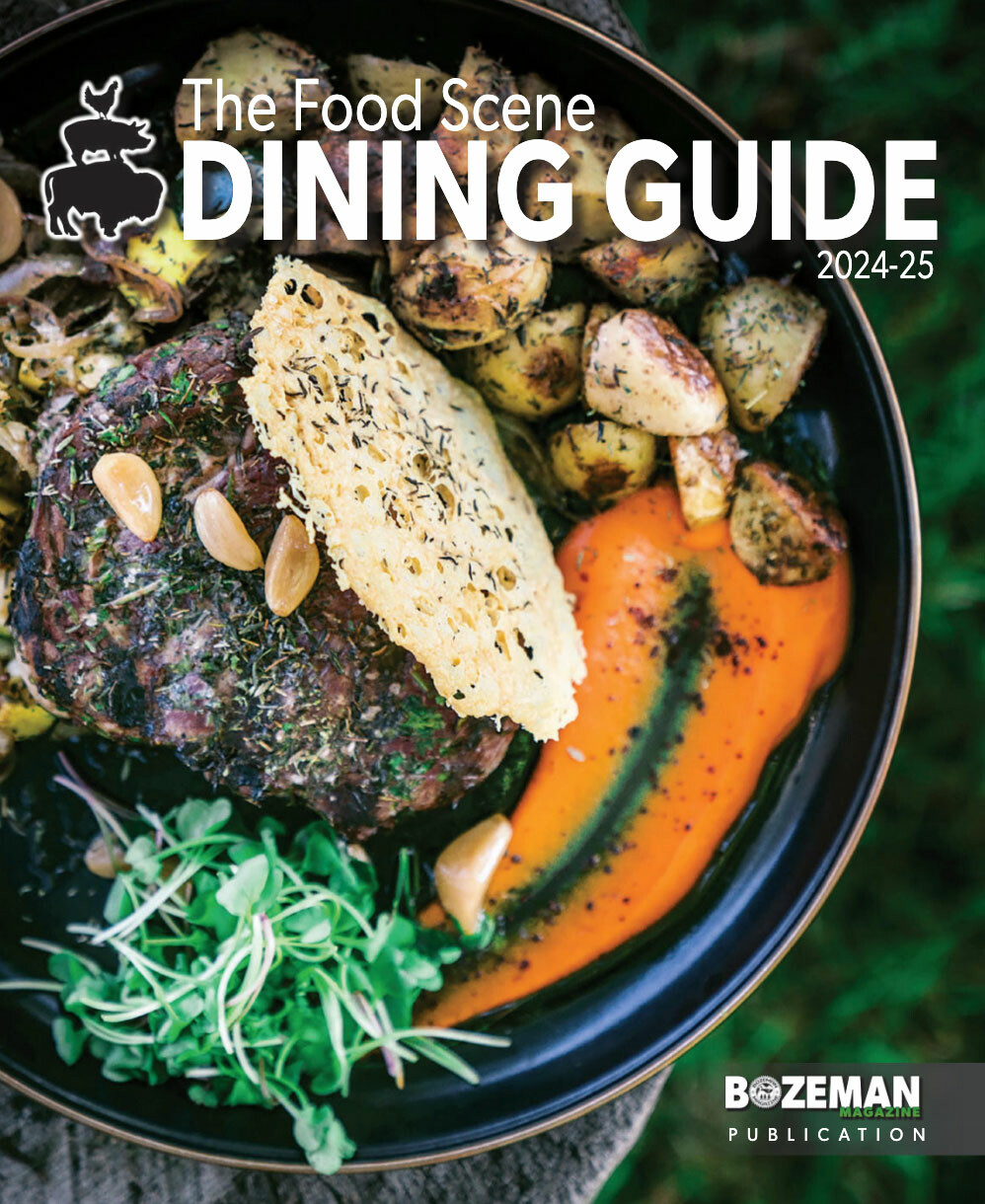
News Comments
Thank you
Open Auditions for Annie
Monday, Sep. 16, 2024
I’m at the Bozeman airport where your painting, “Blowing East” is displayed. It’s absolutely gorgeous! Bravo, Marci!!
The Artists’ Gallery in Bozeman’s Emerson Cultural Center May Exhibits
Sunday, Jun. 30, 2024
This is so typical of a sign in, which we should not have to do to check if we or some one in our party got a permit. I have been working or "creating an account" for 30 minutes and just get the same ...
Smith River permit drawing results available
Sunday, Mar. 10, 2024
I have struggled with this podcast and my own participation therein, the event itself obviously traumatic, but beyond that my inability to reach anyone and convey anything resembling truth. The person ...
Billings, MT Case Becomes True Crime Podcast | 'An Absurd Result'
Marktokarski
Saturday, Jan. 20, 2024